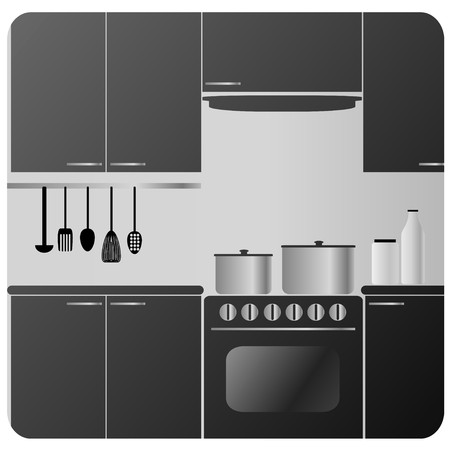Understanding the Unique Challenges of British Living Rooms
Small living rooms in British homes often present distinctive challenges that set them apart from those in other countries. Traditional UK houses, whether Victorian terraces or post-war semis, frequently feature narrow rooms, quirky alcoves, and period details such as ornate fireplaces or picture rails. These elements, while full of character, can restrict how furniture is arranged and how effectively space is used. Bay windows are another hallmark of British architecture; they flood a room with light but can make it tricky to position sofas or media units without blocking access or natural daylight. Furthermore, many British homes have radiators beneath windows or along key walls, further complicating layout decisions. The combination of these features means that homeowners must be creative in their approach to maximising every square foot. Understanding these common characteristics is the first step towards crafting solutions that respect the property’s heritage while ensuring modern comfort and practicality.
2. Optimising Furniture Choices for Compact Spaces
When working with small living rooms in British homes, choosing the right furniture is key to maximising space and maintaining a comfortable, uncluttered environment. British-suited furniture styles often emphasise practicality, durability, and classic design. To get the most out of your limited square footage, opt for multifunctional pieces and clever storage solutions that serve more than one purpose while complementing your interior aesthetic.
Multifunctional Furniture: The Heart of Small-Space Living
Sofas that transform into beds, ottomans with hidden storage, or nesting tables that can be tucked away when not in use are all excellent choices for compact spaces. These versatile items help keep the room open and flexible, adapting to daily needs or unexpected guests without cluttering the area. In particular, British homes benefit from built-in alcove shelving or window seats with storage beneath—features that blend seamlessly with period architecture while offering practical solutions.
Popular Space-Saving Furniture Options
| Furniture Type | Main Function | Space-Saving Feature |
|---|---|---|
| Sofa Bed | Seating/Sleeping | Doubles as guest bed |
| Nesting Tables | Coffee/Side Tables | Stackable, store compactly |
| Ottoman Storage Bench | Seating/Footrest | Lifts to reveal hidden storage |
| Wall-Mounted Shelves | Display/Storage | Frees up floor space |
| Drop-Leaf Table | Dining/Work Surface | Folds down when not needed |
Clever British Storage Solutions
Traditional British homes often feature unique architectural quirks such as chimney breasts or bay windows. These spaces can be harnessed for custom-built cabinetry or shelves that maximise every inch without detracting from the home’s character. Consider using built-in bookcases around fireplaces or creating bespoke cupboards under stairs—classic examples of making the most of awkward nooks.
Selecting furniture with slim profiles and raised legs also helps maintain an airy feel by allowing light to flow underneath, giving even the smallest sitting rooms a sense of openness. By combining smart furniture choices with thoughtful layout planning, you can ensure your compact living room remains both stylish and highly functional.

3. Zoning and Layout Strategies for Small Living Rooms
Effectively maximising a compact British living room often starts with clever zoning techniques and strategic layout planning. In traditional UK homes, where space can be at a premium, it’s crucial to define distinct areas for relaxing, entertaining, and storage—even within a single room. Start by identifying the main functions your living room must serve. Use rugs, bookcases, or even subtle changes in paint colour to visually separate zones without adding physical barriers. For example, a small two-seater sofa positioned parallel to a window can create a cosy conversation area, while a slim console table behind the sofa might delineate an entryway. Sensible traffic flow is key: ensure main walkways remain unobstructed by arranging seating so people don’t have to squeeze past furniture or cut across the TV viewing area. In typical British living rooms, bay windows or chimney breasts often dictate layout; place armchairs or storage benches in these nooks to make use of every inch. Consider floating furniture away from walls to make the space feel larger and more inviting. By thoughtfully zoning your living room and considering both comfort and function, you’ll create a balanced environment that feels welcoming rather than crowded.
4. Light, Colour, and Décor Tips to Enhance Space
Transforming a small British living room into a welcoming, airy retreat is all about clever choices in colour, lighting, and décor. The right palette and features can visually expand your space without compromising on that quintessentially cosy British charm.
Choosing the Right Colour Palette
Neutral tones are a staple for making rooms feel more spacious. Opt for soft whites, gentle greys, or muted pastels—these hues reflect natural light and keep your lounge feeling open. If you favour more traditional British interiors, consider adding subtle undertones of sage green or powder blue. For those keen on a modern twist, accentuate with deeper shades like navy or charcoal on one feature wall.
| Colour Option | Effect |
|---|---|
| Crisp White | Maximises light reflection; feels fresh and clean |
| Pale Grey | Adds sophistication while remaining understated |
| Sage Green | Brings a touch of nature indoors; works well with wooden accents |
| Navy Blue (Accent) | Creates depth without overwhelming the space |
Lighting Solutions for Small Lounges
Good lighting is essential in compact living rooms. Maximise natural light by keeping window treatments minimal—think lightweight blinds or sheer curtains. For artificial lighting, layer different sources: ceiling pendants provide general illumination, table lamps offer focused task lighting, and wall sconces add ambient warmth without taking up valuable surface space.
Lighting Tips:
- Position mirrors opposite windows to bounce daylight around the room.
- Select slimline floor lamps for corners where a side table won’t fit.
- Consider dimmable bulbs to adjust mood from bright afternoons to cosy evenings.
Diversifying Décor for Depth and Personality
Avoid clutter by choosing décor pieces that serve both form and function. Built-in shelving provides storage without intruding on floor area. Incorporate decorative touches such as framed prints of British landscapes, textured throws in heritage patterns, or antique-inspired clocks for character. Keep accessories grouped in odd numbers—this creates visual interest while maintaining an organised look.
| Décor Feature | Space-Saving Benefit |
|---|---|
| Wall-mounted shelves | Add storage vertically; free up floor space |
| Mirrors | Create an illusion of depth; amplify natural light |
| Multi-purpose furniture (e.g., storage ottoman) | Combines seating with hidden storage; reduces clutter |
British Tip:
Select timeless designs that blend seamlessly with period features if you live in a Victorian or Edwardian property, preserving the home’s historic appeal while maximising comfort and function.
5. Storage Hacks for Tidy and Functional Living
When it comes to maximising small living rooms in British homes, innovative storage is a must. With clever solutions, you can maintain a tidy, inviting space without sacrificing style or comfort.
Built-In Shelving: The Ultimate Space-Saver
One of the most effective ways to increase storage while keeping your lounge open is to install built-in shelving. Whether you opt for classic alcove shelves beside the fireplace or custom floor-to-ceiling units, these provide ample room for books, décor, and everyday essentials. Painted in a shade that complements your walls, they blend seamlessly with your interior and make use of often-overlooked vertical space.
Under-Sofa Solutions: Hidden Gems
British homes frequently feature compact sofas, so why not utilise the space beneath? Invest in sofas with built-in drawers or simply tuck decorative baskets underneath for storing throws, magazines, or children’s toys. This keeps the area looking neat while ensuring everything you need is close at hand.
Clever Use of Alcoves: Making Every Inch Count
Traditional British terraces and cottages are known for their charming alcoves. Transform these nooks into functional spaces by adding fitted cupboards or floating shelves. They’re perfect for stashing away board games, remote controls, or even setting up a mini home office station when space is tight.
By embracing these smart storage hacks—built-ins, under-sofa storage, and creative alcove usage—you’ll keep clutter at bay and ensure your small living room remains both tidy and highly functional. These practical solutions don’t just save space; they also preserve the character and cosiness that define British homes.
6. Incorporating British Style While Saving Space
Bringing quintessential British charm into your small living room doesn’t mean sacrificing space or functionality. In fact, clever design choices can help you enjoy both sophistication and efficiency. Start by opting for classic elements like Chesterfield sofas or armchairs in compact sizes, which offer timeless appeal without dominating the room. Consider using patterned cushions or throws in tartan, houndstooth, or floral prints to add a touch of traditional British flair without cluttering surfaces.
For those who prefer a more contemporary look, mid-century inspired furniture with clean lines and tapered legs helps keep the floor visible and the space feeling open. Multi-functional pieces—such as ottomans that double as storage or coffee tables with hidden compartments—are ideal for maintaining a tidy, practical environment.
When it comes to colour schemes, soft neutrals like cream, dove grey, or sage green evoke the calmness of a British countryside retreat, while still allowing you to layer textures and accents. Add character with understated wall art featuring local landscapes or iconic London scenes. Don’t forget the importance of lighting: choose adjustable floor lamps or wall sconces that provide warmth and ambiance without taking up precious table space.
Finally, make use of built-in shelving around fireplaces or alcoves—a classic feature in many British homes—to display books, ceramics, or family heirlooms. This not only maximises vertical space but also gives your living room a personal and inviting atmosphere. With thoughtful choices inspired by both tradition and innovation, it’s possible to create a small living room that feels spacious, practical, and undeniably British.
7. Flexible Living: Adapting Your Space for Everyday Needs
Modern British living rooms are more than just places to unwind—they’re dynamic spaces that must flexibly serve a variety of daily purposes. Whether you’re hosting friends for tea, working remotely, or enjoying family time, the key lies in designing a layout that adapts as your needs change. Understanding how to maximise flexibility can help even the smallest living rooms punch well above their weight.
Entertaining Guests with Ease
When entertaining, consider lightweight furniture and seating that can be easily moved or stowed away. Nesting tables, foldable chairs, and pouffes provide extra surfaces or perches without permanently crowding the room. A modular sofa system can be reconfigured to create a more sociable setting or to open up floor space as needed. Wall-mounted shelves or slimline sideboards help keep surfaces clear for serving snacks and drinks, making every inch count during gatherings.
Making Room for Working from Home
The rise of remote work means many British homes now require workspace within shared living areas. Opt for compact desks that double as consoles or tuck neatly behind sofas. Drop-down wall desks are another smart solution for tight spots. Choose office chairs with a subtle design that blends into your décor, or use dining chairs in a dual role. Cable management is essential—use discreet trunking or baskets to keep leads tidy and maintain a clutter-free environment.
Balancing Family Life
For households with children, flexible storage is indispensable. Look for ottomans and benches with hidden compartments to stash toys or games at a moment’s notice. Low-level shelving keeps books and activities accessible while maintaining order. Rugs or soft mats can define play zones by day and roll away in the evening to return the lounge to adult use. Use washable slipcovers on sofas to make quick clean-ups part of everyday life.
Quick Tips for Multifunctional Living Rooms
- Choose multi-purpose furniture—think sofa beds, extendable tables, and stackable stools.
- Zone your space using rugs, lighting, or bookcases as dividers rather than fixed partitions.
- Opt for neutral colour schemes to keep the space feeling open as functions shift throughout the day.
A Room That Grows With You
The modern British living room must cater to everything from quiet evenings in to lively gatherings and busy workdays. By selecting adaptable furniture, employing clever storage solutions, and zoning your space effectively, your small living room can meet all the demands of contemporary life—ensuring comfort and style aren’t sacrificed for practicality.


